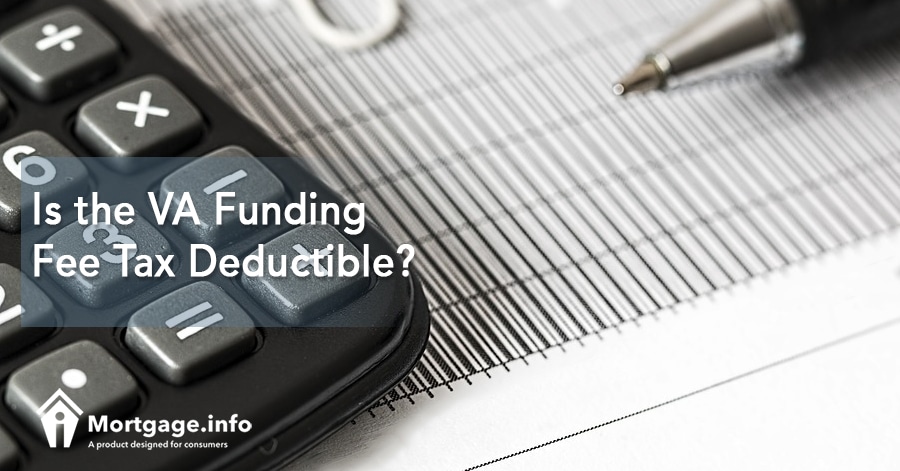
VA loans provide veterans with 100% financing with flexible underwriting requirements. In exchange for the flexible guidelines, though, most veterans pay what’s called a VA funding fee. This fee is a percentage of your loan amount and is paid directly to the VA. It’s how the VA continues to provide a guaranty to lenders. If a veteran defaults on a loan, the VA pays the lender 25% of the defaulted amount.
Get Matched with a Lender, Click Here.
The funding fee for members of the regular military using their VA benefit for the first time is 2.15% of the loan amount. The funding fee for members of the Reserves or National Guard pays 2.4% of the loan amount. This could be a significant fee, so is it tax deductible?
VA Funding Fee is a Form of Mortgage Insurance
The IRS views the VA funding fee as a form of mortgage insurance. As of the 2017 tax year, mortgage insurance was still deductible on your taxes. This meant that veterans could still deduct the expense on their tax returns. This was as a result of a last minute extension of the mortgage insurance deduction.
Will the extension carry over into 2018? It still remains to be seen. What we do know, though, is that itemizing deductions may become harder for any taxpayer, not just veterans. The new standard deduction for individuals is $12,000 and $24,000 for those filing married with joint returns. This may eliminate the number of taxpayers that can itemize their deductions, which would make them unable to deduct the VA funding fee.
Why Pay the VA Funding Fee?
Even if the funding fee isn’t tax deductible, it’s still a ‘helpful’ expense. Here’s why.
The VA program is self-sustained. Taxpayers don’t fund the program. The VA funds it themselves. They do so with the help of the VA funding fee paid with each loan. There are a few exceptions to the rule, which we will discuss below, but for the most part, veterans pay the fee.
In fact, veterans pay the fee each time they take out a VA loan. Let’s say for example that you buy a house and then decide to refinance it two years later. You pay the original fee with the purchase and then depending on the type of refinance, you pay a fee again. If you use the VA’s streamline refinance program, the fee is greatly reduced to 0.5% of the loan amount. Now if you sell that home and go buy another home with your VA benefit, you’ll pay the fee again.
Click to See the Latest Mortgage Rates.
The VA keeps the money collected in the event that they have to bail out a lender. The VA provides lenders with a guaranty of as much as $113,275 and that’s for each VA loan written. Without the funding fee, the VA wouldn’t be able to guarantee loans. If they couldn’t, then chances are lenders would not provide 100% financing on a risky loan.
Why VA Loans are Risky
Let’s look at why VA loans are risky. First, the lender can provide 100% financing. That means you have no investment in the home. If you face financial distress, the chances are high that you will walk away from the home since you don’t have any of your own money invested.
VA loans also allow many ‘risky’ factors. For example, in most cases you only need a 620 credit score. That’s not a very high score, which can mean you have a history of default. You also can have a debt ratio up to 43%. If you put those factors together, you can see how risky VA loans can be for lenders. Of course, they do their due diligence to make their best judgment on your ability to afford the loan, but no process is without its risks.
The fact that you may not be able to deduct the VA funding fee on your taxes shouldn’t keep you from getting a VA loan. The VA provides these loans to make it easier for veterans to become homeowners. Without the funding fee, VA loans may not be as flexible as they are today. Make sure to discuss your tax situation with your tax advisor to see if you can deduct the cost of your funding fee.
